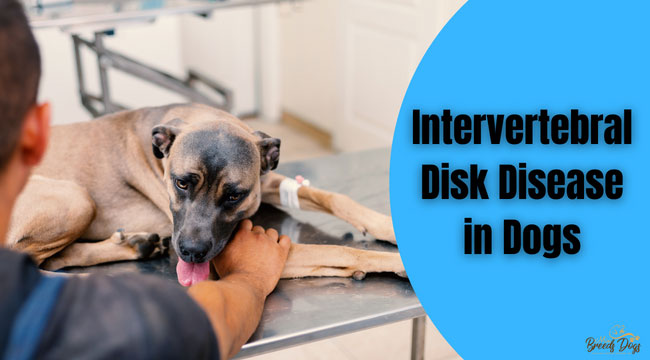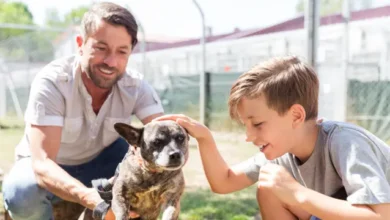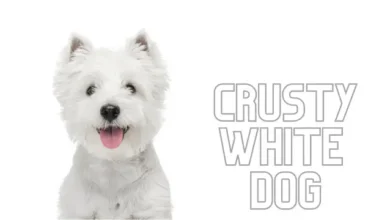Intervertebral Disk Disease (IVDD) and Treatment in Dogs

MixbreedDogs.com is an Amazon Associate, and we earn from qualifying purchases.
Back problems and back pain, in general, are common among people, and it can be challenging to see your dog experiencing them. Intervertebral disc disease (IVDD) is one of these back problems that dogs can get and one of the most common pathologies in veterinary neurology.
What Is IVDD?
The spine comprises hard vertebrae and bony bodies between the vertebrae in the intervertebral disc, which is a fibrous tissue with a circular shape and lipid content. It is elastic and slightly deformable. The disk helps cushion shock and give vertebrae mobility.
For various reasons, the intervertebral disc can lose its integrity and properties over time. When these discs wear out, the outer layer yields and the gelatinous lipid content is released into the medullary canal, which presses and compresses the spinal cord. In such cases, problems with the normal functioning of the vertebrae may occur, which can lead to mobility difficulties.
In other cases, it can cause chronic pain and lead to differing degrees of paralysis.
Read More: Beagle Pitbull Mix – Is This Cross Right for You?
Breed Predisposition
Dwarf dogs (breeds with short legs) are most likely to develop IVDD because normal cartilage development has been genetically modified for a short, robust appearance. These breeds include:
- Dachshund
- Beagle
- Pekingese
- Poodle
- French bulldog
- Shih Tzu
- Lhasa Apso
- Basset Hound
- Corgi
- Cocker Spaniel
- Pekingese
Of the breeds with normal-length legs, the most commonly affected are:
- German shepherd
- Labrador retriever
- Doberman pinscher
Obese dogs are even more prone to developing IVDD.
What Causes Intervertebral Disc Disease in Dogs?
Intervertebral disc disease affects the spine gradually, over a period of time, being a degenerative condition.
The most common cause of this condition is a hardening of the vertebral discs, which can be caused by extreme force from the outside or can happen over time. Due to this strengthening, the intervertebral discs cannot properly cushion the spine.
When the discs stop working normally, it can lead to abrasion or rupture of the spinal cord because these hardened discs also put pressure on the spine. In such cases, the nerve impulses are affected, and your dog will have problems controlling its bladder and bowel.
Intervertebral discs can also break (one or more) if your dog jumps or lands badly on the ground. In this case, spinal cord compression can occur, which can lead to severe pain, nerve damage, and paralysis (partial or total).
There are two main types of IVDD in dogs:
Type 1 (IVDE – Disc Extrusion)
Type 1 usually occurs in Dachshunds and begins explosively. A large amount of viscous matter is discharged from the intervertebral disc into the spinal cord canal. Depending on how advanced the hernia is, it can lead to limb paralysis and a lack of nervous control over urination and defecation.
Type 2 (IVDP – Disc Protrusion)
This type occurs in breeds with normal-length legs (medium to large dog breeds), aged between 5 and 12 years. The outer part of the disc material gradually comes out, causing progressive compression of the spinal cord.
Intervertebral Disk Disease in Dogs Symptoms
Intervertebral Disc Disease (IVDD) is a condition that can occur in any of the discs in your dog’s spine. The symptoms of IVDD will depend on which part of the spine is affected and how severe the damage is. Symptoms can also appear suddenly or come on gradually. If your dog displays any of these symptoms, seek veterinary care as soon as possible. IVDD can be very painful for dogs, and early treatment is essential for preventing the condition from becoming more severe or causing irreversible damage to your dog’s spine.
Symptoms of Neck Intervertebral Disc Disease (Cervical IVDD)
Cervical IVDD is a condition that affects the discs in a dog’s neck. If you notice any of the following symptoms, which can occur throughout the body and range from mild to very severe, contact your vet for immediate advice, or visit your closest animal emergency hospital for veterinary care:
- Head held low
- Arching back
- Shivering or crying
- Reluctance to move
- Unsteadiness in all 4 legs
- Inability to walk normally
- Knuckling of all 4 paws
- Inability to support own weight
- Inability to stand
- Inability to feel all 4 feet and legs
Symptoms of Lower-Back Intervertebral Disc Disease (Lumbosacral IVDD)
Thoracolumbar IVDD in dogs is caused by a damaged disc in the back region, and you might see one or more of the following symptoms.
Symptoms of Thoracolumbar IVDD usually affect the middle to back region of the dog’s body and can range from mild to very severe.
- Weakness in hind legs
- Muscle spasms
- Tense belly
- Crossing back legs when walking
- Inability to walk normally
- Knuckling of back paws, or dragging rear legs
- Inability to support their own weight
- Unable to move or feel back legs
Symptoms of Lower-Back Intervertebral Disc Disease (Lumbosacral IVDD)
Your dog may be in pain if he has lumbosacral IVDD. These discs are located between his lower back region and hips, which can cause him a lot of discomforts that range from mild to very severe symptoms depending on how bad it gets!
- Urinary or fecal incontinence
- Limp tail
- Pain and/or difficulty jumping
- Dilated anus
IVDD treatment
To protect your dog from irreversible damage, we recommend taking them to the vet for an examination if you spot any signs of Intervertebral Disc Disease. Delays in treatment could lead to permanent disability or even death!
Anti-Inflammatory Medications
If your dog is diagnosed with a mild to moderate IVDD injury, treatment will likely include a combination of steroid and anti-inflammatory medications to help reduce pain and swelling. Your dog will need to strictly limit their activity for approximately 4-6 weeks in order to allow the injury to heal properly. Anti-inflammatory medications can be very effective in reducing pain and inflammation associated with IVDD, but it is important to follow your veterinarian’s instructions carefully and not give your dog more medication than prescribed.
Surgery for IVDD
Surgery is usually suggested for dogs with more severe forms of Intervertebral Disc Disease where rest and medicines are insufficient to alleviate pain and other symptoms.
Your dog’s veterinary surgeon will remove the hardened disc material that is pressing on your dog’s spinal cord and produce the IVDD symptoms during surgery.
Surgery results are best in dogs who have not lost their ability to walk.
If your dog’s operation does not restore normal mobility, a dog wheelchair can help your pup live a happy and active life while suffering from Intervertebral Disc Disease.
IVDD surgery recovery takes 6 to 8 weeks of restricted activity. Running, climbing stairs, playing with other dogs, or jumping on furniture should be avoided to minimize further damage while your dog’s spine recovers.
How much does IVDD surgery cost for dogs?
IVDD surgery for dogs can cost anywhere from $1500 to $4000. This does not include the cost of x-rays and other imaging techniques that may be necessary. The total surgery cost can be anywhere from $3000-$8000. If your dog is at risk for IVDD, it is a good idea to save money or have pet insurance in case they need surgery. IVDD is a very treatable disease, so it is important to be prepared financially in order to give your dog the best chance at a long and happy life.
Physical Therapy
After surgery, your vet may also recommend physical therapy for your dog. This will help the dog to build muscle strength and help them to move around more comfortably again.
Conclusion
Thanks for reading! We hope this post was informative and helps you keep your furry friend healthy and happy. Please share this post with your friends and family, so they can be aware of the symptoms of IVDD in dogs, too. And if you think your dog may have IVDD, don’t wait – bring them in for a consultation with our Matthews NC veterinary neurologists right away.



